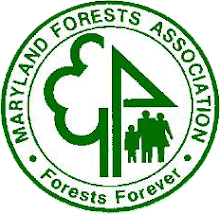To the Editor:
Cumberland Times-News
October 29, 2008 11:09 pm
— Much attention has been paid to Allegany County’s first “green” building, a state Human Resources and Development Commission (HRDC) building to be located in Cumberland.
Unfortunately, pending state government rules could discourage the building from using any wood from Maryland tree farms.
The reason is that Maryland follows the Leadership in Energy and Environmental Design (LEED) system for green building, a system that does not recognize the environmental value of wood harvested from most of the working forests in Maryland.
The result is that Maryland’s forest products industry and its 10,000 employees will likely see little or no benefit from this taxpayer-funded project, and, if some officials in Annapolis have their way, Maryland’s working forests and forest products industry could find it difficult to benefit from state construction projects.
The reason is the on-going national debate about green building policy. To help architects and builders make good decisions about energy efficiency and environmentally responsible materials, several green building rating systems have been developed.
Materials that provide good insulation give a building a higher score, as well as high-tech heating and cooling systems or more airtight, heat-resistant windows.
Wood building materials that come from sustainably-managed forests also provide higher ratings. The problem is that LEED, the green building system currently used by Maryland state government, only provides credit for wood products from forests certified by the Forest Stewardship Council (FSC), a system that is common overseas but not widely used in Maryland, and not as widely used in the United States as the Sustainable Forestry Initiative (SFI) or American Tree Farm System (ATFS).
Maryland has 58,049 acres of SFI forests and 157,174 acres of ATFS forests, nearly a quarter of which are located in Allegany and Garrett counties. Allegany County also has over 170 ATFS-certified forests, more than any other county in the state.
In contrast, there is little FSC forest land in Maryland — less than 35,000 acres and none of it in Western Maryland. **(a call received by the MFA office after this editorial ran stated that there are approximately 8,000 acres in Allegany and another 8,000 in Garrett County that are FSC certified. We regret the oversite, however, this is still a small amount in comparison to what is certified under the other systems) Despite FSC’s claims of superiority, research has shown that all three systems provide essentially the same environmental benefits.
Because the state’s LEED system does not allow the use of wood from the SFI or ATFS forests owned by Maryland’s tree farmers, it is more likely that the wood in state buildings could wind up coming from other states, or even overseas, than from Maryland itself.
In early November, a state advisory board will issue recommendations on whether or not state government should use only the LEED system and its virtual ban on most Maryland wood products, or if other green building rating systems — such as Green Globes which recognizes wood from Maryland’s SFI and ATFS forests — should be used as well. Many industry and policy experts expect the recommendations to go against the Maryland forest landowners and forest products industry and in favor of LEED.
If so, this would be both an environmental and economic mistake. If the market for Maryland wood products dries up, many tree farmers will have no choice but to sell their land for residential or commercial development.
Unlike tree farms, once a forest is cleared for subdivisions or strip malls it no longer helps combat global warming by absorbing carbon dioxide nor does it provide habitat for wildlife.
Additionally, with the economy causing new housing starts to decline by more than two-thirds, state construction projects will be an important source of business opportunity for the Maryland forest products industry. Therefore, eliminating bureaucratic barriers like the state’s exclusive use of LEED can mean the difference between having a job and the unemployment line for some.
Maryland should not adopt a LEED-only green building policy. Instead, it should recognize all established green building programs, including Green Globes, which recognizes wood from Maryland’s SFI and ATFS forests, so that architects and designers can pick the system best suited for each project.
Also, the state should not grant a monopoly to LEED when it actually hurts Maryland citizens — the state’s tree farmers and 10,000 forest product industry workers.
By adopting green building policies that help keep Maryland’s forests intact and forest product workers on the job, state government is not only looking out for Maryland interests, it is nurturing support for the very environmental awareness which is at the heart of the green building movement.
Karin E. Miller, Executive Director
Maryland Forests Association Inc.
Grantsville




No comments:
Post a Comment